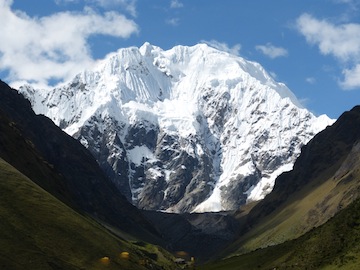Thanks to an agreement between Google and
the Ministry of Culture of Peru, anyone can now 'walk' among the most
impressive Inca ruins in the world, accessing interactive panoramic images.
Anyone can walk without leaving your home between the Inca ruins of MachuPicchu in Cusco, considered a masterpiece of architecture and engineering.
Users can virtually go places like the
astronomical observatory (Intihuatana), the Sun Temple and the Temple of the
Three Windows, three sites dedicated to Inti, Quechua name of the sun god, the
principal deity of the Incas.
Thanks to the tools of Google Maps and
Google Earth, the panoramic views of Machu Picchu will be enjoyed by millions
of Internet users, who can access by click of mouse to the Inca citadel located
more than two thousand meters above sea level and considered one of the most
popular tourist destinations on the planet.
Source: RT.
Choose your Inca Trail 2016:











